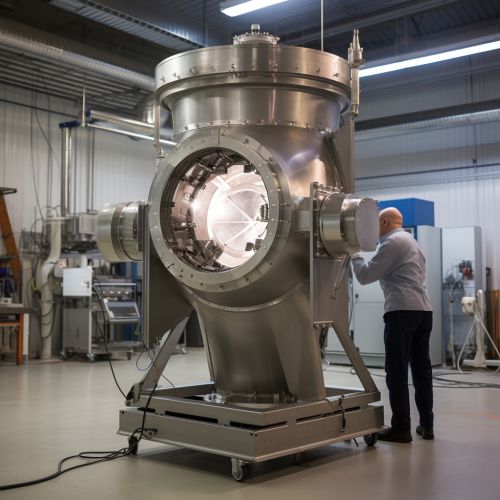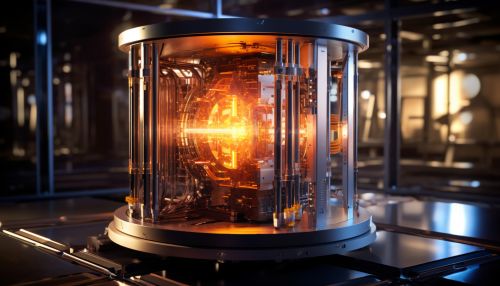Low temperature physics
Overview
Low temperature physics, also known as cryogenics, is the study of the production and behavior of materials at extremely low temperatures. The word is derived from the Greek word "kryos" which means "cold", and "genic" which means "to produce". The field has a wide range of applications, from the study of superconductivity and superfluidity to the cooling of electronics and the search for dark matter.


History
The history of low temperature physics begins in the 19th century with the liquefaction of gases. In 1823, Michael Faraday liquefied most gases then known to exist, and by 1883, Heike Kamerlingh Onnes of Leiden University had managed to liquefy helium. Two decades later, helium was cooled to below one kelvin, thus reaching temperatures close to absolute zero.
Principles of Low Temperature Physics
Low temperature physics is governed by the principles of quantum mechanics, as the behavior of particles at these temperatures is significantly different from their behavior at higher temperatures. At low temperatures, quantum effects such as superconductivity and superfluidity become apparent.


Superconductivity
Superconductivity is a quantum mechanical phenomenon where a material, when cooled to a certain temperature, can conduct electric current with zero electrical resistance. This was first discovered in mercury by Heike Kamerlingh Onnes in 1911. Since then, many other materials have been found to exhibit superconductivity at low temperatures.
Superfluidity
Superfluidity is another quantum phenomenon that occurs at low temperatures. It is a state of matter in which a fluid, typically helium-4, exhibits zero viscosity and can flow without dissipating energy. This was first observed by Pyotr Kapitsa, John F. Allen, and Don Misener in 1937.
Techniques in Low Temperature Physics
There are several techniques used in low temperature physics to achieve and measure extremely low temperatures. These include adiabatic demagnetization, dilution refrigeration, and magnetic refrigeration.


Adiabatic Demagnetization
Adiabatic demagnetization is a process used to achieve temperatures close to absolute zero. It involves the use of a magnetic field to align the magnetic moments of a paramagnetic salt, and then slowly reducing the field, causing the salt to cool.
Dilution Refrigeration
Dilution refrigeration is a technique used to reach temperatures below 1 Kelvin. It involves the use of a mixture of helium-3 and helium-4. The helium-3 atoms "dilute" into the helium-4, absorbing heat and lowering the temperature.
Magnetic Refrigeration
Magnetic refrigeration is a cooling technology based on the magnetocaloric effect. It is used to attain extremely low temperatures, as well as for cooling in room temperature applications.
Applications of Low Temperature Physics
Low temperature physics has a wide range of applications in various fields, from fundamental research in physics to practical applications in engineering and technology.


Fundamental Research
Low temperature physics plays a crucial role in fundamental research in physics. It is used in the study of phenomena such as superconductivity and superfluidity, as well as in the search for dark matter and neutrino detection.
Engineering and Technology
In the field of engineering and technology, low temperature physics is used in the cooling of electronic devices, in particular, those used in quantum computing. It is also used in the production of low temperature environments for scientific experiments and for the storage of biological samples.
